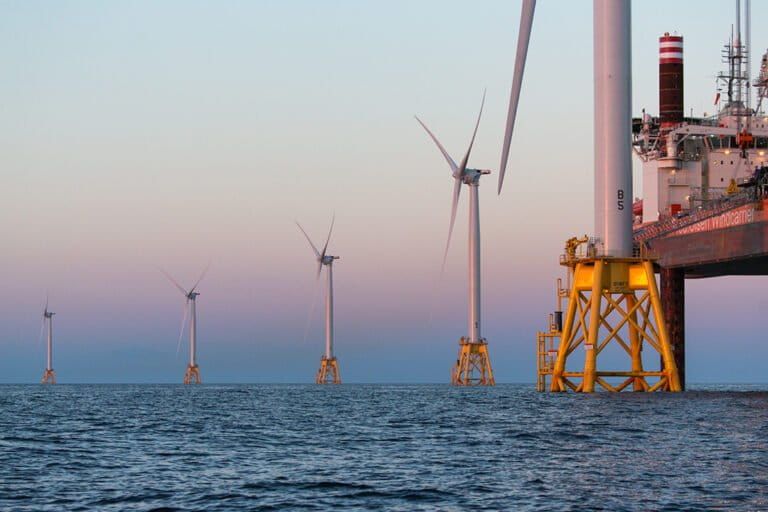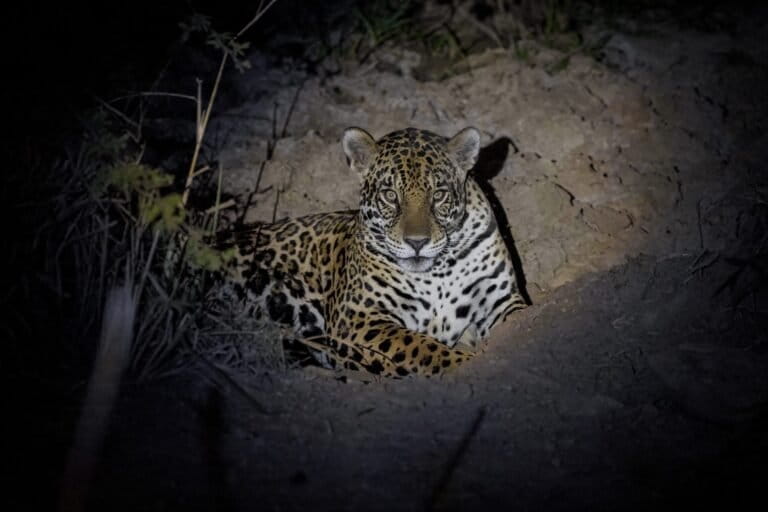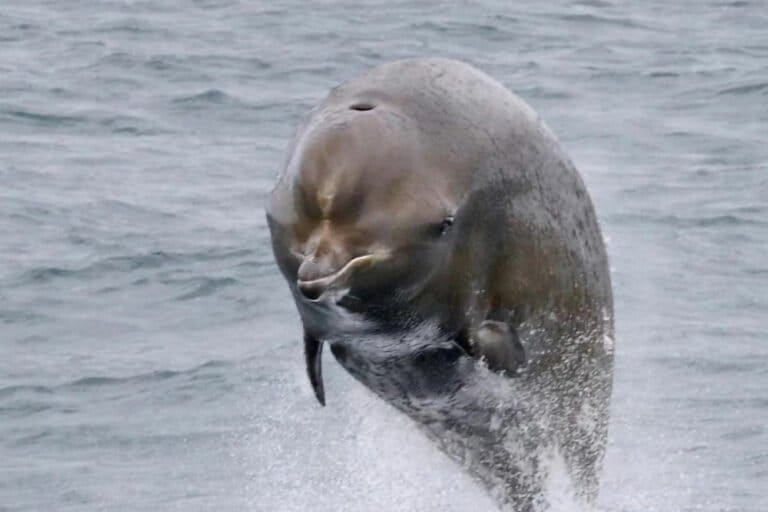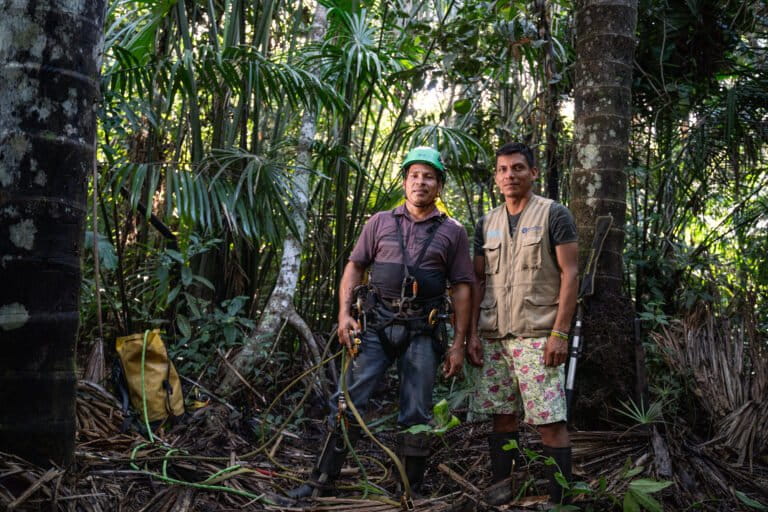- Struggling freshwater fish populations in the Mekong River catchment received a boost earlier this month when a team of scientists and fisheries specialists released 1,500 captive-reared juvenile fish into Tonle Sap Lake in Cambodia.
- Experts say the release is the first step in rejuvenating the Mekong’s depleted fish populations and fisheries, which have been suffering in recent years due to overfishing, drought, habitat destruction, and the impacts of upstream dams on the Mekong River’s natural flow.
- The fish, including critically endangered Mekong giant catfish and giant barb, and endangered striped river catfish, were released into a series of fish sanctuaries and community conservation areas that protect crucial fish nursery habitat in Tonle Sap Lake, the world’s most productive inland fishery.
- Long-term survival of the Mekong’s threatened fish species will also depend on protection of migration corridors and upstream spawning grounds, and on maintenance of free-flowing and connected watercourses, say experts.
At a young age, Mekong giant catfish look the same as striped river catfish, their regular-size, widely consumed relatives. But as they mature, the giant catfish quickly eclipse their smaller kin, reaching a weight of 200 kilograms (440 pounds) in just six years.
It was this astonishing growth rate that alerted a fish farmer in Prey Veng province in Cambodia to the fact that she had mistakenly stocked her pond with one of the critically endangered goliaths. Over 13 years, it grew so massive that she could no longer accommodate it and was obliged to donate it to the local fisheries authority for release back into the wild.
Earlier this month, an international team of scientists and fisheries specialists liberated the behemoth into a network of protected areas in Tonle Sap Lake in central Cambodia, alongside 1,500 other captive-reared juvenile fish, in an effort to boost local fish numbers.
In addition to two Mekong giant catfish (Pangasianodon gigas), among the world’s largest freshwater fish, the team released hundreds of nutritionally important and endangered striped river catfish (Pangasianodon hypophthalmus) and critically endangered giant barbs (Catlocarpio siamensis), a type of freshwater carp and Cambodia’s national fish.
Most of the fish had been collected as larvae from the mainstream Mekong River near Phnom Penh and reared at a fisheries research facility operated by the Cambodian Fisheries Administration in partnership with the USAID-supported Wonders of the Mekong project.

Struggling fish populations
The release was the first step toward restoring depleted freshwater fish populations throughout the Mekong River, according to Zeb Hogan, a fish biologist at the University of Nevada, Reno, and lead researcher for Wonders of the Mekong.
“[Events] like this inspire people to think about the Tonle Sap Lake and the Mekong River more broadly … in ways that catalyze more action,” Hogan told Mongabay in an email. He added that the release has helped raise awareness of no-fishing regulations in the lake’s fish sanctuaries that aim to safeguard vulnerable species and protect valuable fisheries.
In recent years, the combined threats of overfishing, drought, habitat destruction and the impacts of upstream dams on the Mekong River’s natural flow have wreaked havoc on fish populations and aquatic habitats throughout the river system.
Tonle Sap Lake, a UNESCO Biosphere Reserve, lies within the Lower Mekong Basin. During the wet season, between June and August, the lake can swell to five times its size as the Mekong River’s annual flood pulse surges up the Tonle Sap River, flooding the lake’s surrounding forests and wetlands. These habitats are crucial nurseries for more than 300 species of fish, whose larvae are carried downstream into the lake by the flood pulse.
As a result, the lake is home to the world’s most productive inland fishery, clocking annual fish catches of up to 400,000 metric tons. However, abnormally dry conditions in recent years due to droughts and a weakened flood pulse from the Mekong, in part due to upstream engineering, have severely depleted catch sizes.
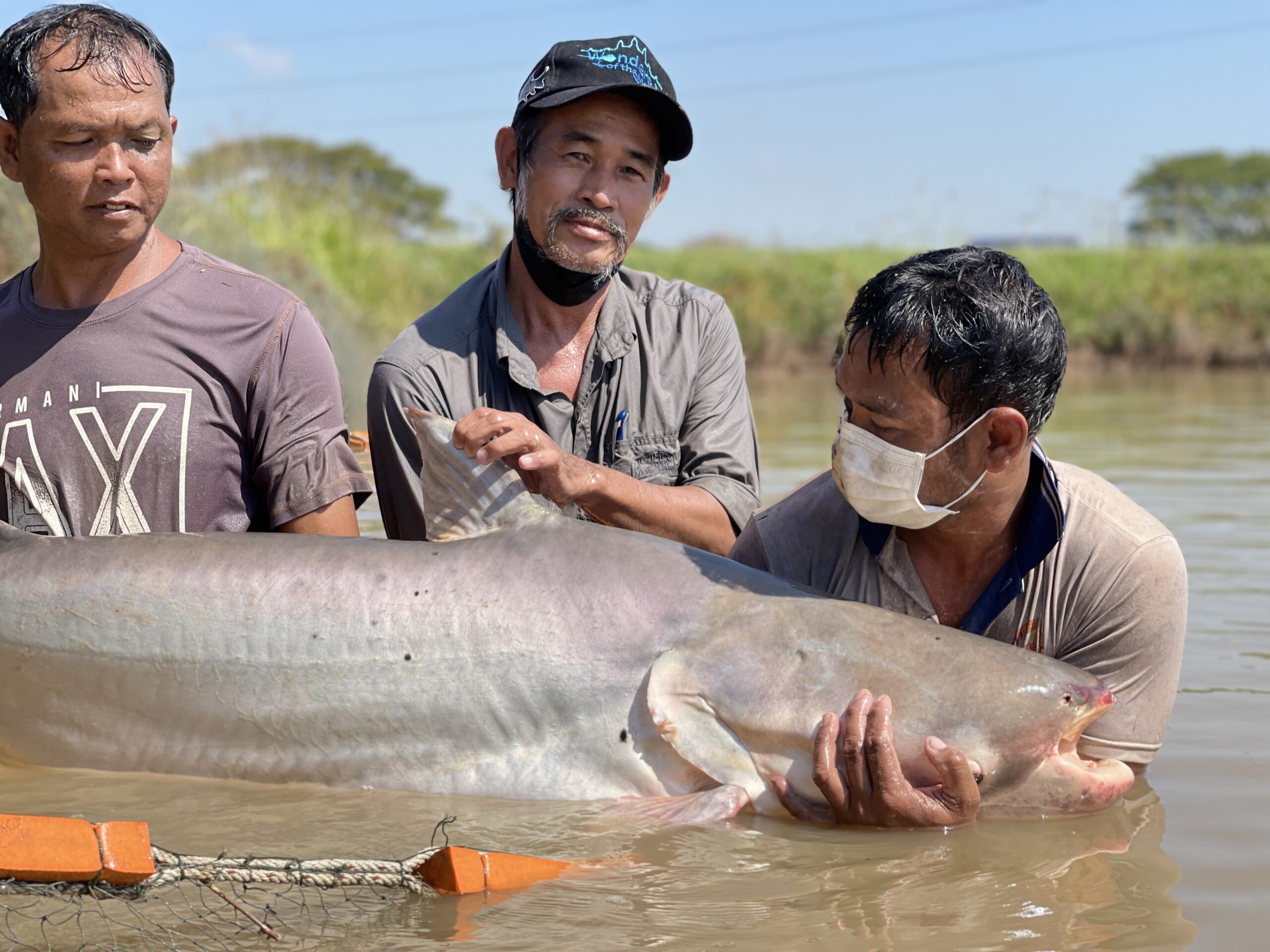
Freshwater fish reserves work
To rejuvenate the fish populations and fishery in Tonle Sap Lake, eight government-mandated no-take zones were established in 2013. Together with a series of community conservation areas, the fish reserves form one of the world’s most extensive freshwater protected area networks.
The team released the captive-reared fish into these safe havens, where they can mature before embarking on spawning migrations up and down the broader Tonle Sap and Mekong rivers.
Recent research has shown that such freshwater fish reserves are just as effective as their marine counterparts in boosting fish biomass and safeguarding fisheries and biodiversity. In particular, they are “incredibly successful” at protecting big fish, which is good news for populations of large species, like the Mekong giant catfish and giant barb.
In 2020, researchers studying freshwater fish reserves in Thailand found that they sustained more than twice the total number of fish and more than 20 times the total weight of fish compared to non-protected stretches of river. Larger fish were found almost exclusively within the protected areas.
“In northern Thailand, in the dry season when the water is clear, you can see hundreds of big fish schooling in the protected areas of the river and very few fish outside the protected zones,” Hogan said, despite there being no barriers in the river separating the two areas.
And similar results are being observed in Tonle Sap Lake. Hogan said he has witnessed fishing nets cast both inside and outside the lake’s fish reserves; invariably, he said, nets inside the reserves pull in more fish.
Nonetheless, the fish studied in the 2020 study in Thailand were wild populations. While wild fish seem to be able to learn where the reserve boundaries are and seek protection within them, it remains unclear whether the newly released captive-reared fish will be able to respond to the reserves in Tonle Sap Lake in a similar way.
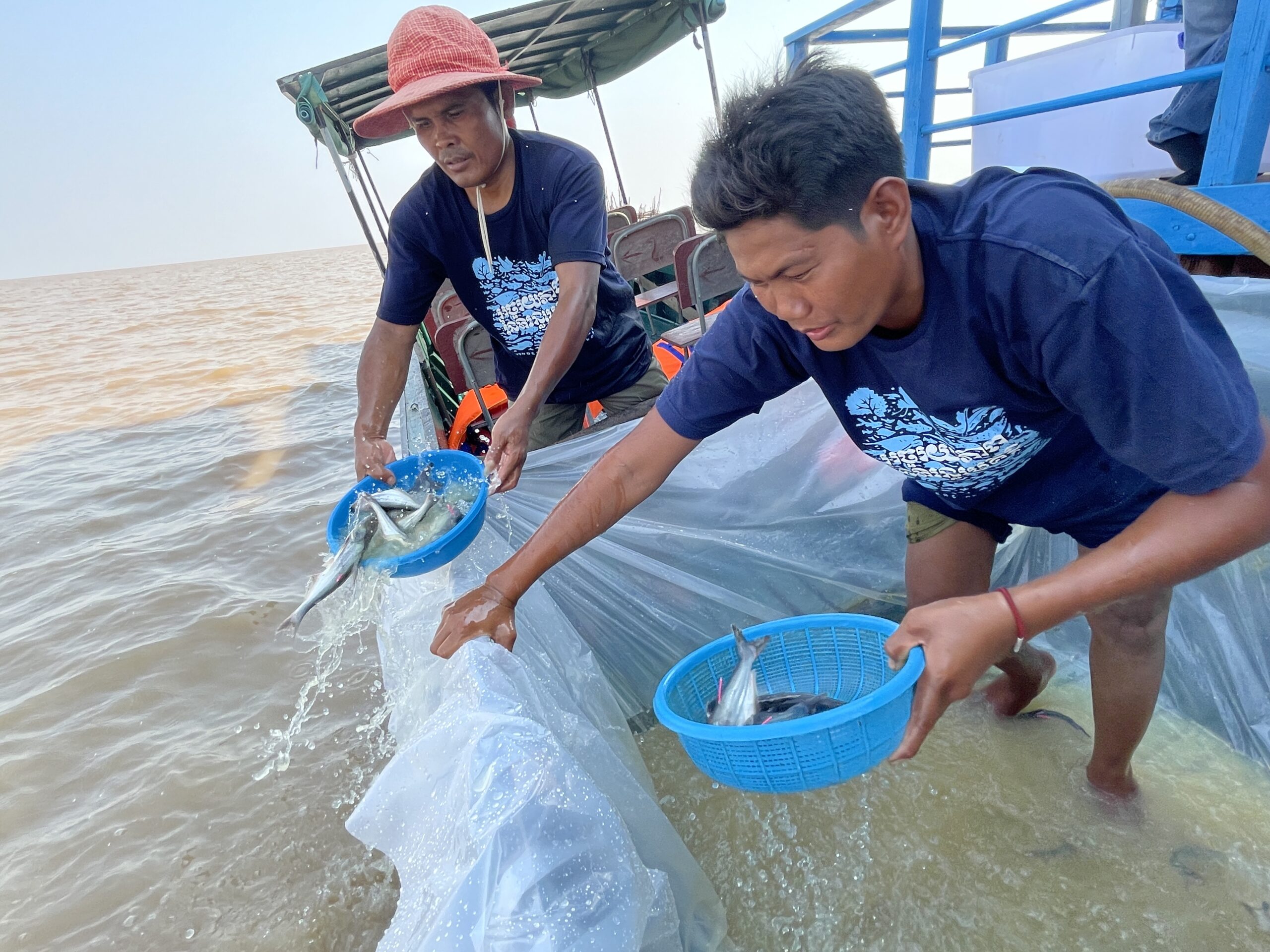
One part of the puzzle
Keen to learn more about the fish themselves, the researchers fitted all 1,500 released fish with small tags to track their movements and monitor survival. By asking fishers to return the tags of any fish they catch with a note of the location, the researchers can assess the extent of fishing mortality and how far the fish had traveled.
This new knowledge will help fisheries managers to fine-tune their conservation approaches. “We need to better understand the effectiveness of fish reserves as a refuge for threatened fish,” said Ngor Peng Bun, dean of fisheries science at the Royal University of Agriculture in Phnom Penh, who has been studying Mekong fish and fisheries for 25 years.
The recent fish release and subsequent studies “will inform future conservation practices, and help us understand whether such methods are effective in supporting the restoration of these species’ wild populations,” he said.
Tracking fish movements will also enable the researchers to find out whether the captive-reared fish are able to respond to external cues that normally trigger migration and spawning. The team plans to release more fish in September 2022, at the peak of the wet season, to assess whether the timing of the releases has any effect on these behaviors.
Notwithstanding the many benefits of the fish releases, they are just one small part of an overall solution to plummeting fish numbers, according to Hogan. Crucially, measures must be taken to protect the fish during all stages of their lives. This also means safeguarding migration corridors like the Tonle Sap River and spawning grounds in upstream parts of the Mekong River, he said.
Maintaining the Mekong River’s natural flow regime is also vital: the river’s flow prompts fish to set off on their upstream spawning migrations and carries young fish downstream to their nursery habitats in Tonle Sap Lake.
With the Mekong’s annual flood pulse weakening as a result of droughts and upstream engineering, scientists are concerned that fish are less able to successfully complete these crucial life stages that give rise to the next generation.
“No one wants to lose these iconic fish,” Hogan said. “Saving them will require additional action, such as development of species conservation action plans; enforcement of fisheries regulations, including year-round protection of fish sanctuaries; and maintenance of healthy, connected rivers that the fish need to complete their life cycles.”
Banner image: A Mekong giant catfish measuring roughly 1.6 meters (5 feet) is released into a fish sanctuary in Tonle Sap Lake, Cambodia in March, 2022. Photo courtesy of Wonders of the Mekong project
Citation:
Koning, A. A., Perales, K. M., Fluet-Chouinard, E., & McIntyre, P. B. (2020). A network of grassroots reserves protects tropical river fish diversity. Nature, 588(7839), 631-635. doi:10.1038/s41586-020-2944-y
Carolyn Cowan is a staff writer for Mongabay. Follow her on Twitter @CarolynCowan11
FEEDBACK: Use this form to send a message to the author of this post. If you want to post a public comment, you can do that at the bottom of the page.










